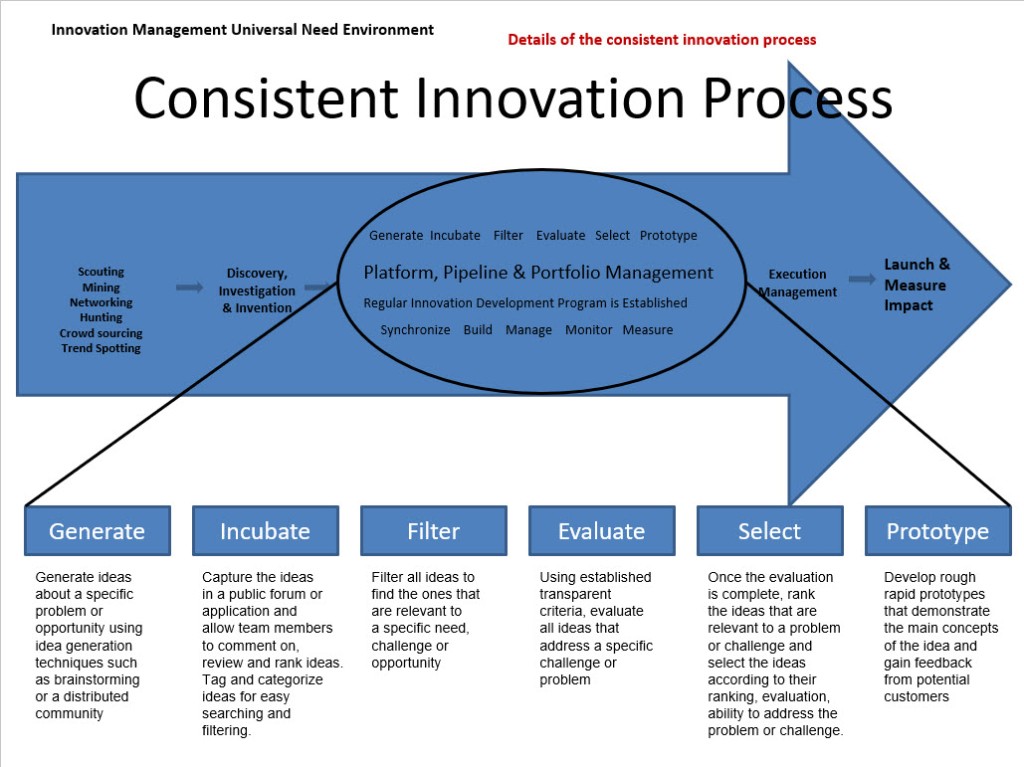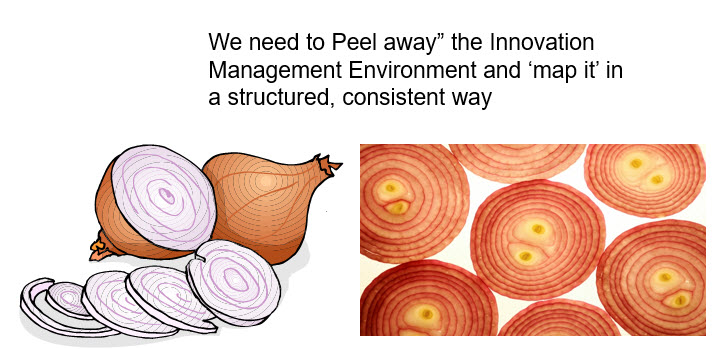 It is funny but that often-used phrase “what goes around, comes around” seems appropriate here.
It is funny but that often-used phrase “what goes around, comes around” seems appropriate here.
I was catching up with my often collaborator and sparring partner on “all things innovating” Jeffrey Phillips recently, and within our conversation, some of our discussions sort of triggered a reflection back to some fundamental work we undertook some years back.
In revisiting it, I felt it does stand the test of time and does seem to make this “come around” seem true. Let me provide a quick introduction along with some brief explanations :
Innovation for me always needs common reference points
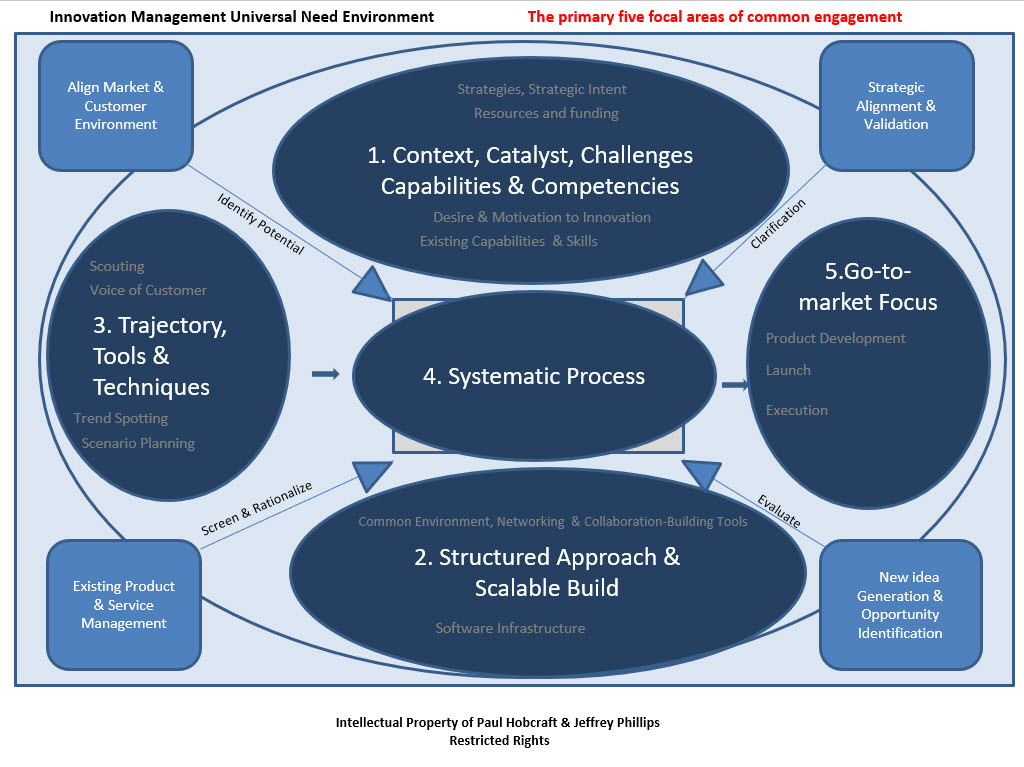 When you don’t have a common approach to something, in this case, the management of innovation, you can have considerable pockets of inefficiency and a high level of ineffectiveness to deal with. Your organizational energies become fragmented as you constantly deal with differences, gap issues & misunderstandings that result in much-hidden costs and ‘spent, unproductive’ capital.
When you don’t have a common approach to something, in this case, the management of innovation, you can have considerable pockets of inefficiency and a high level of ineffectiveness to deal with. Your organizational energies become fragmented as you constantly deal with differences, gap issues & misunderstandings that result in much-hidden costs and ‘spent, unproductive’ capital.
You often find resources are not focusing on advancing innovation; they are often spent on fixing what you have. By not having a clear common approach that everyone understands you fail to establish a common language. By not adopting a common set of innovation reference points you can remain often unproductive, consistently re-adapting, re-working and plugging gaps that could be better invested in managing the many aspects of complexity you always find in a better thought-through innovation management structure, one that focuses on advancing your activity.
A belief that has not changed.
Jeffrey and I believed, even more so today, that the innovation space needs a common starting point – a collaborative reference model. Certainly, many other large and successful industries have common standards – in technology for definitions and common software and platform building, or in common accounting protocols have significantly advanced business confidence, common understanding, and sharing. We are gathering around the protocols in Industry 4.0 presently to connect and link manufacturing in a more “globalized” world.
So we need to begin to build an Innovation Management Understanding
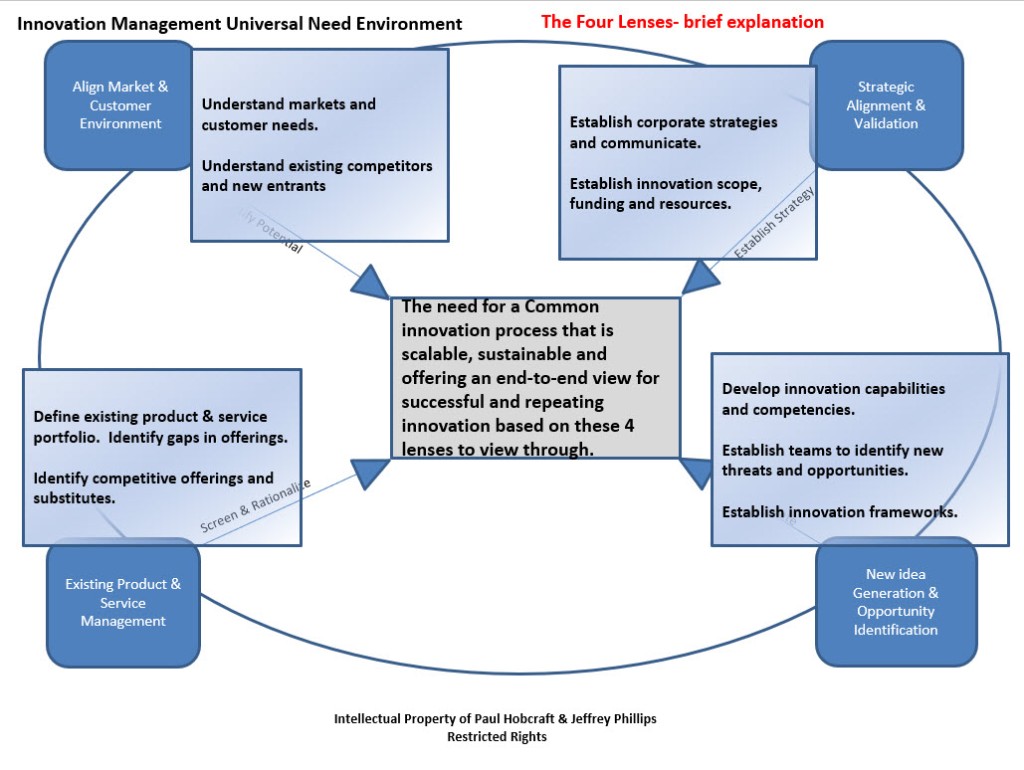 It is with these shared and transparent frameworks, clients can gain knowledge, have a growing confidence to make an investment and gain a clearer sense of direction. So why don’t we seem to achieve a common approach to innovation, not constantly adjusting and adapting to different ‘standards’ or approaches and feeling innovation just seems to be stuck in a random, ad-hoc approach, left in individual organizations to figure out?
It is with these shared and transparent frameworks, clients can gain knowledge, have a growing confidence to make an investment and gain a clearer sense of direction. So why don’t we seem to achieve a common approach to innovation, not constantly adjusting and adapting to different ‘standards’ or approaches and feeling innovation just seems to be stuck in a random, ad-hoc approach, left in individual organizations to figure out?
What we all really want is to acquire a common, repeatable, scalable innovation structure that allows us to invest, manage distinctly different innovations on a consistent basis.
Adopting a common innovation framework has numerous advantages
Clients in partnership with advisors can build from this basic common platform of understanding by the more effective use of applying people with the right skills and capabilities to focus and accelerate the job-on-hand: the need-to-deliver innovation consistently to final clients needs.
If consultants, advisors, and practitioners can demonstrate that their solutions are based on a common framework they set about the creation of their own unique differentiation, based on their unique skills and points of value-add, not hiding behind generalizations, easy to copy quick fixes, spend most of their time on the constant need to firefight and plug gaps, or sometimes add to the mystery that unclear aspects of innovation management or incomplete advice can generate. It degrades efforts in our view.
We constructed a four-layered innovation model building around 1) strategy, 2) different necessary innovation approaches, 3) people and culture and 4) processes and platforms.
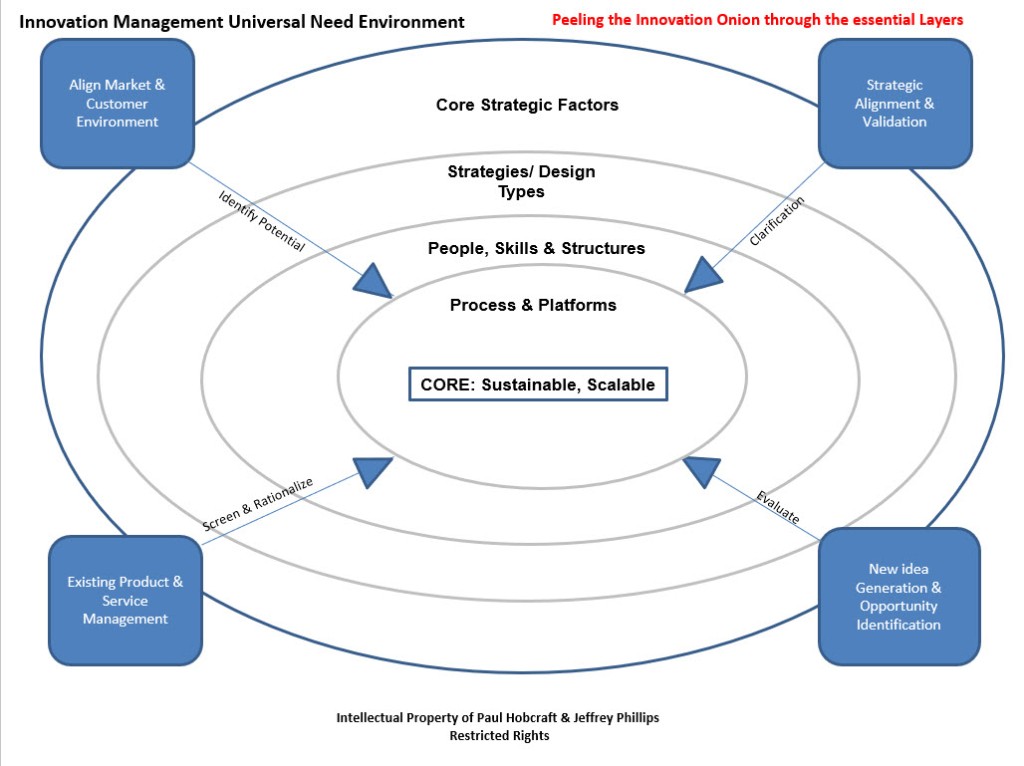 Reviewing where we are and recognizing innovation can be approached very differently
Reviewing where we are and recognizing innovation can be approached very differently
Now before I go any further I want to spend a little more time on reviewing this past work, relating it to what we have learned in the recent times on innovation’s advancement and see if we can re-emphasize the depth of analysis and research we undertook and bring it back into our innovation world.
This is the next step in building the common understanding
This is recognizing there are different innovation types and they have unique approaches that can still be incorporated in a common process. Each has its own detailed map but the top-level type denominators are shown below.
 As I said, on my recent re-visit it seems to stand a test of time and forms a fundamental bedrock of collaborative innovation in all its different dimensions and guises.
As I said, on my recent re-visit it seems to stand a test of time and forms a fundamental bedrock of collaborative innovation in all its different dimensions and guises.
Then we have the Common Process suggested as the adopted process for managing innovation
This is where innovation management software needs to be ‘joined up’. We have two distinct offerings, those that provide software for the front end and those that approach the portfolio management process. These need integrating but as the best, in the class as an integrated robust software offering, one that is available in one software package, not as it is offered today, in one or the other being a stronger piece of software (FFE) and the other staying light (PLM) or the other way round. It needs connecting up in a comprehensive way. Some current software providers might claim this is being offered but I have yet to be convinced any have achieved this as yet. Let me be proved wrong!
Does what I am sharing here make sense to you?
I need another chat with Jeffrey to see if we can open this back up to the scrutiny it requires and, as always, different thinking to improve the approach any argument for a common innovation process requires from others.
We are not usurping the different standards being currently worked upon for any ISO or equivalent proposal. We are in the search for a practical and logical common practice for innovation and its management process.
